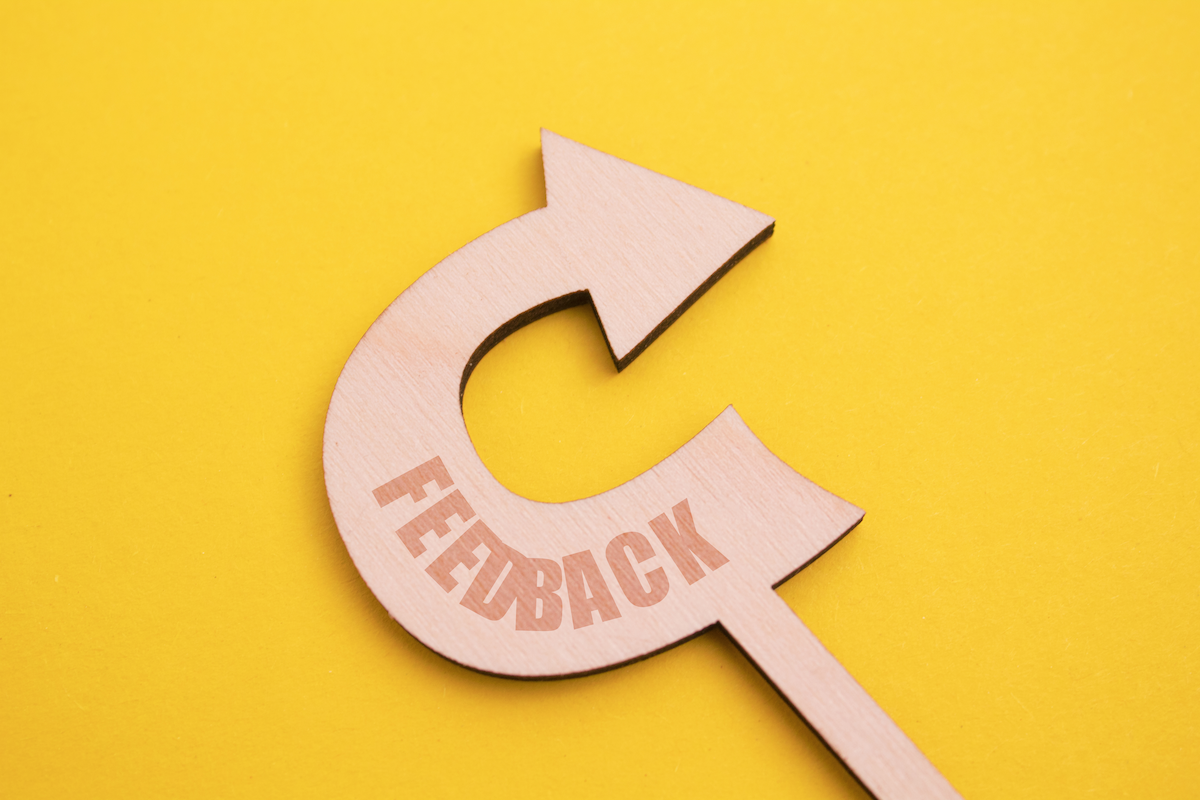Running a successful business is about more than just offering great products or services—it’s also about continuously adapting to meet the needs of your customers and employees. Here’s where feedback looping comes in, helping you gather insights that will guide your decisions and drive meaningful improvements. By actively listening to what others have to say, you’re able to refine your processes, enhance your offerings, and keep your business on track.
In this blog, we’ll explore how feedback looping can guide you in making smarter decisions to achieve long-term growth. Read on!

What is Feedback Looping?
Feedback looping is the process of collecting, analyzing, and acting on feedback in a continuous cycle. It involves gathering insights from customers, employees, and other stakeholders to make informed decisions. The key part of feedback looping is not just collecting the feedback but also using it to make changes, then going back to see if those changes worked by asking for more feedback.
The cycle of feedback looping allows you to continually refine and improve based on the information you gather, ensuring that your business is always evolving in response to what others are saying. This cycle of collection, action, and reflection helps keep your business on track and aligned with its goals.

Why Feedback Loops Are Key to Business Growth
Feedback loops are crucial for business growth because they enable you to establish a culture of constant improvement. The more you listen, the more you learn—and the better your decisions will be. Here are six key benefits of feedback looping:
1. Enhanced Customer Experience
By regularly collecting feedback and acting on it, you make your customers feel heard. This serves as your guide on how to meet their expectations, fix any pain points they experience, and ultimately improve their overall experience with your business. Happy customers are loyal customers, and they’re likely to recommend your business to others.
2. Better Product Development
Feedback loops allow you to get valuable input about your products, helping you identify areas for improvement. Whether it’s fixing bugs or adding new features, feedback steers your product development toward the right direction. This means your offerings will stay relevant and appealing to your target market.
3. Stronger Employee Engagement
When you ask employees for feedback, you show them that their opinions matter. This fosters a positive work environment where communication is open and transparency is encouraged. Engaged employees are more motivated, which leads to better performance and higher morale.
4. Faster Decision-Making
Rather than waiting for lengthy reports or annual reviews, feedback loops afford you the flexibility to make real-time adjustments. With immediate input from customers and employees, you can quickly identify issues and take action—keeping your business agile and responsive to changes.
5. Increased Innovation
The insights gathered through feedback loops often lead to new ideas and innovations. When you listen to diverse perspectives, whether from customers or team members, you’re opening the door to creative solutions that potentially set your business apart from the competition.
6. Improved Relationships and Trust
Engaging with your customers and employees through feedback helps build stronger relationships. When people feel their voices are heard, trust is built, and they’re more likely to stay loyal. This trust, in turn, translates into long-term success for your business as you retain both valuable customers and top talent.

Different Types of Feedback Loops
Feedback loops come in different types, and each one enables you to address specific challenges, improve processes, and drive growth. The right type of feedback loop for your business depends on what you’re trying to achieve. Let’s take a closer look at two common types of feedback loops: positive and negative.
Positive Feedback Loop
A positive feedback loop works by reinforcing good things that are already happening. When you gather feedback that highlights positive experiences—whether it’s a feature of your product, service, or any other aspect of your business—you use that feedback to continue or expand those successful actions. This creates a cycle where your successes build on each other, driving more growth and improvement.
For example, imagine customers often praise a particular feature of your product. By acting on that feedback and enhancing that feature, you’re more likely to receive even more positive responses. The more customers like it, the more you can build upon it to keep satisfying them. The positive feedback loop keeps growing and strengthening over time.
Negative Feedback Loop
On the flip side, a negative feedback loop focuses on identifying and fixing problems. When customers or employees highlight areas where your business is falling short, this feedback becomes an opportunity to correct course. Negative feedback doesn’t just point out what’s wrong—it allows you to address those issues directly and prevent them from happening again.
Let’s say customers report that they’re unhappy with your customer service response times. By collecting that feedback, you can analyze the problem, identify weak spots in your process, and then make improvements to fix those issues. The negative feedback loop helps you “close the loop” on complaints, serving as a learning curve for you in implementing impactful changes moving forward.
How to Create and Implement an Effective Feedback Loop
Creating a feedback loop that truly works for your business requires more than just collecting feedback and making changes. It’s about making sure the feedback you gather actually leads to meaningful improvements. Follow these steps to build and implement an effective feedback loop that drives growth and enhances your business:
1. Define your goals and metrics.
Before you start collecting feedback, it’s important to know what you want to achieve. Are you aiming to improve customer service, refine your product, or boost employee engagement? Being clear about your goals will drive you to gather the right kind of feedback to focus on the areas that matter most.
2. Gather feedback from multiple sources.
Feedback should be an ongoing process, and it’s best to gather insights from a variety of sources. Use surveys, social media, customer reviews, and direct conversations with both customers and employees. The more channels you use, the better understanding you’ll have of what’s working and where you need to improve.
3. Analyze the feedback.
Once you’ve collected the feedback, take time to carefully analyze it. Look for patterns, common issues, or areas where people are praising your business. This analysis helps you spot trends and decide which issues need your immediate attention and which areas are performing well.
4. Take action based on feedback.
Feedback is only useful if you act on it. Make changes based on what you’ve learned. Whether it’s adjusting a product feature, updating customer service policies, or improving internal processes, the key is to use the feedback to make real improvements that will positively impact your business.
5. Communicate changes and reiterate the process.
Once you’ve made improvements, don’t keep it to yourself. Let your customers or employees know about the changes you’ve made based on their feedback. This not only shows that you value their input but also encourages them to continue providing feedback in the future. It’s a great way to build trust and show that their voices matter.
6. Evaluate and refine your loop.
An effective feedback loop is never finished. As you continue gathering feedback and making changes, evaluate how well the loop is working. Are you seeing positive results? Are new issues cropping up? Adjust your process as needed to keep your feedback loop fresh and effective over time.

Enhance Your Customer Service Capabilities with Outsource Philippines
Effective customer service is all about listening to your customers, understanding their needs, and acting on their feedback. Incorporating feedback loops into your strategy keeps you in touch with your customers to improve your services where the needs call for one. By gathering, analyzing, and implementing customer feedback, you can ensure a more personalized and satisfying experience.
Partnering with Outsource Philippines takes your customer service to the next level. With our expertise in managing feedback loops, we guarantee real-time insights and swift responses, improving your response times and overall customer experience. Our dedicated team focuses on collecting, analyzing, and acting on feedback efficiently, allowing you to stay connected with your customers and keep your business moving forward.
Trust our expert team to help you enhance your customer service capabilities and drive customer loyalty. Contact us today.







